
Your total lawn care cost depends on several factors, including the type of service and lawn size. Our guide will cover what you can expect to pay for lawn care.
The best grass for a high traffic lawn depends on the climate and soil


A lush green lawn is the perfect place for summertime entertaining and fun and games with the kids, but not all grasses are created equal—some can’t handle much wear and tear. Upgrading your yard to the best grass for high-traffic activity requires some research to choose the perfect product for your climate, soil type, and sun exposure.
Perhaps the most crucial consideration in deciding the right types of grass for your lawn is whether to plant cool- or warm-season grass. A lawn that holds up well under the stifling heat of a southern summer typically dies off in the winter and vice versa. When in doubt, hire a lawn care professional to recommend and plant the right type of grass for your high-traffic yard.
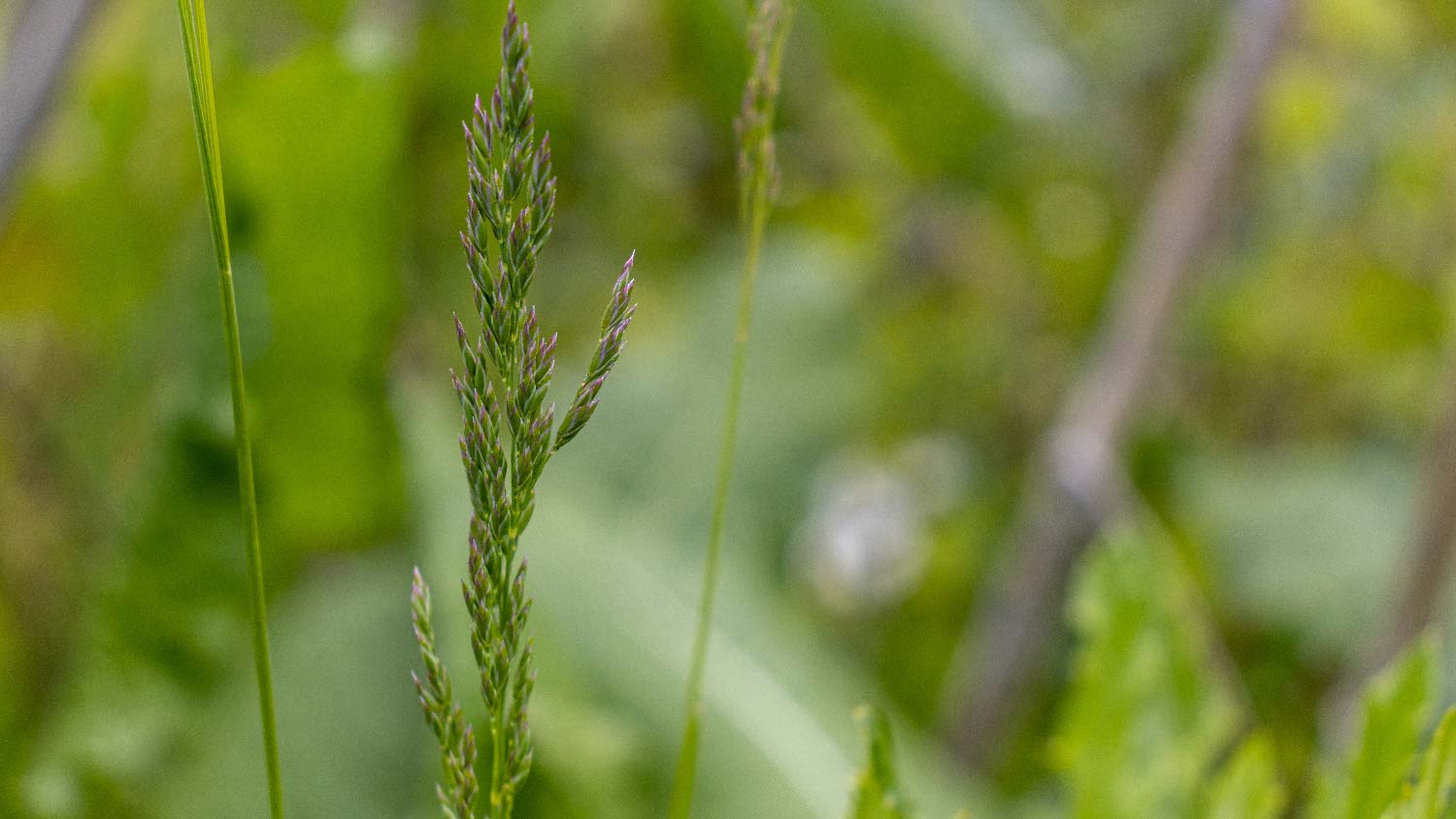
Kentucky bluegrass is a cool-season grass with a bluish-green appearance and a soft, fine texture. While this grass type takes a while to germinate, once established, it spreads quickly through a network of underground stems called rhizomes. This aggressive regrowth makes it an excellent option for high-traffic yards as it can repair itself quickly after damage.
Kentucky bluegrass is somewhat high maintenance and can become stunted or dormant when subjected to a lack of nutrients or water. These lawns require one inch of water per week to maintain optimal appearance. Though it has a shallow root system, it grows dense, providing a thick, padded area for walking and playing.
You should plant this grass in the fall and watered thoroughly, especially as it becomes established. It should be mowed at two to three inches tall most of the year, but left to grow taller during the summer to retain moisture. Dethatch Kentucky bluegrass at least every two years.
| Pros | Cons |
|---|---|
| Fast-spreading and self-repairing | Slow to germinate |
| Hearty in cold climates | Susceptible to pests and diseases |
| Soft blades | High maintenance and prone to stripe rust and slow growth without proper nutrients |
| Weed resistant | Poor drought tolerance due to a shallow root system |
Best for: Yards in Northern regions with high rainfall and nutrient-heavy soils
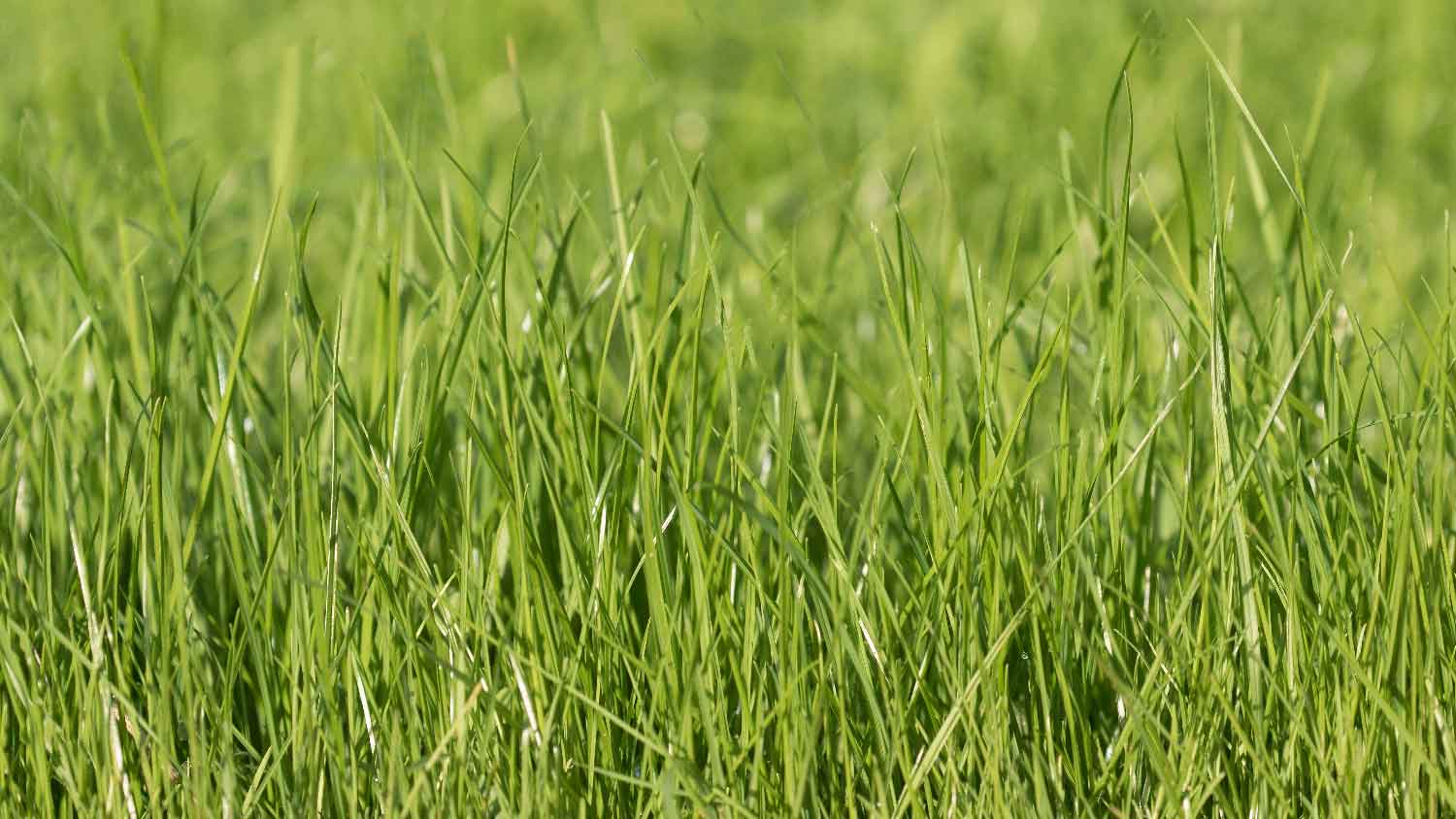
As one of the fastest germinating cool-season grasses, the tough blades of perennial ryegrass are well suited to overseeding areas damaged by high traffic. Unfortunately, it spreads slowly, so it will recuperate more slowly than other species. Its deep root systems allow it to survive drought better than Kentucky bluegrass, though it will still go dormant without regular watering.
Ryegrass is a bunch-type grass, meaning it spreads by the crowns and should not be cut less than two inches high. You should ideally plant it in spring, late summer, or early fall and it should receive at least one inch of water every two weeks or every week in Southern climates. Though it is typically resistant to pests, look out for chinch bugs, greenbug aphids, and billbugs infestations.
| Pros | Cons |
|---|---|
| Fast germination | Slower at spreading and repairing |
| Weed and pest-resistant | Needs a lot of fertilizer |
| Deep root systems with minimal thatch and fine but tough blades | High water consumption |
| Can grow in most soils, including those that have been compacted |
Best for: Overseeding lawns damaged by high traffic; repairing Kentucky bluegrass lawns, as it grows faster and can be planted earlier in the year
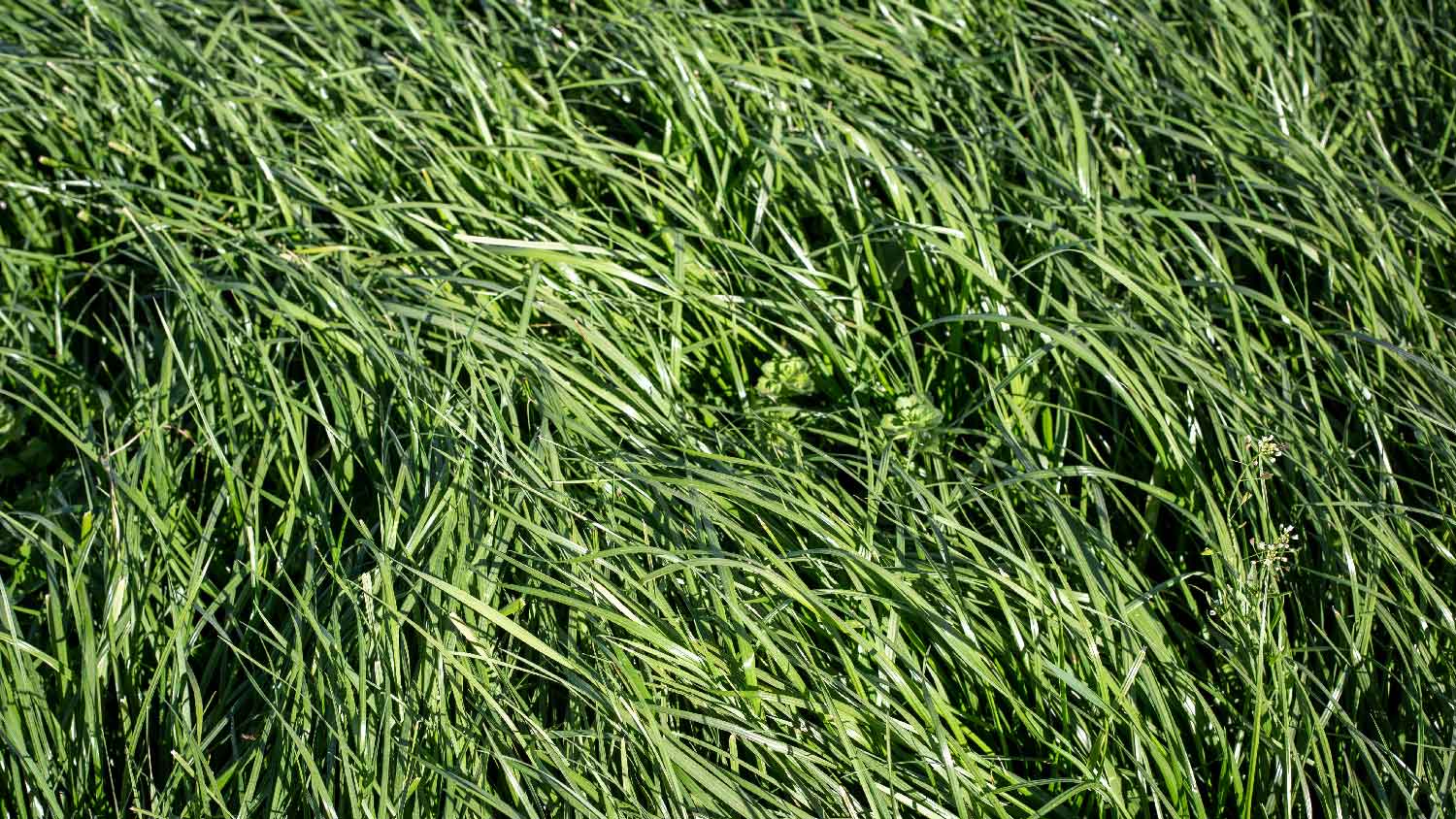
One of the heartiest cool-season grasses, tall fescue has deep root systems that help it withstand abuse from frisky dogs and playful children. While it’s one of the sturdiest grasses, it lacks the spreading power of Kentucky bluegrass, and when it comes to ryegrass vs fescue, fescue doesn’t grow as quickly. Its tolerance to heat and drought makes it more suitable for warmer transitional zones than most cool-season grasses.
Tall fescue prefers clay soil, unlike many other grasses, and it can thrive with minimal nutrients. As a bonus, it is resistant to disease and pests. Since it is bunch-forming, you should not trim it shorter than two inches, but it should be mowed weekly for optimal health and appearance. Provide one inch of water a week.
| Pros | Cons |
|---|---|
| Low maintenance | Slower at spreading and growing |
| Drought, heat, pest, and disease resistant | Coarse-feeling |
| Sturdy blades with little thatch and deep, extensive root systems | Cannot self-repair |
| High shade tolerance |
Best for: Areas with hot, dry summers, homes with digging pets, and yards with clay soil that are low in nutrients
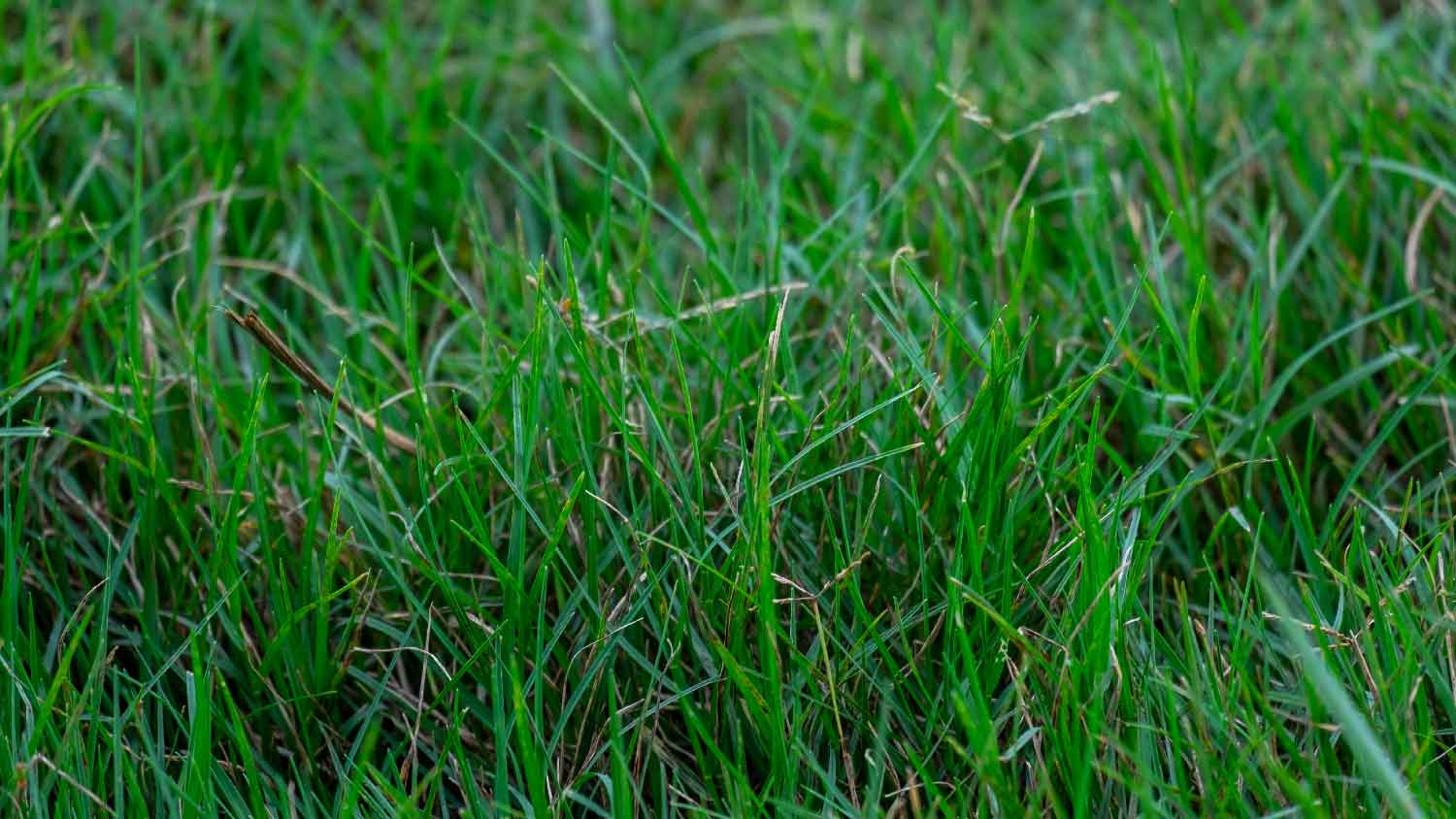
As a fast-growing, aggressive-spreading, and self-seeding warm-season species, Bermuda grass is one of the most popular grasses in Southern and transitional climates. It spreads by above-ground stolons and below-ground rhizomes, ensuring it can quickly recover when damaged. Similarly, its deep roots and dense growth help it thrive under the toughest conditions, including heat, drought, heavy traffic, and even high salt buildup from dog urine. However, it may go dormant and turn brown under extended drought periods and throughout the winter.
You should keep Bermuda grass between one and two inches long, but the length should be increased during periods of drought or high heat to help retain moisture. This sun-loving grass has high water needs during the summer and should get 1½ inches of water per week, but when it goes dormant in the winter, it only requires one inch of water per month. Additionally, Bermuda grass should be fertilized once a month throughout the summer.
| Pros | Cons |
|---|---|
| Fast growing, self-seeding, aggressively spreading, and quick to recover from damage | Susceptible to weed growth and excessive wear in the winter |
| Drought, heat, and salt resistant | Turns brown when it goes dormant in the winter or during extended droughts |
| Thick roots | Cannot self-repair |
| Minimal shade tolerance |
Best for: Sports fields, yards with pets, and areas prone to high temperatures and drought
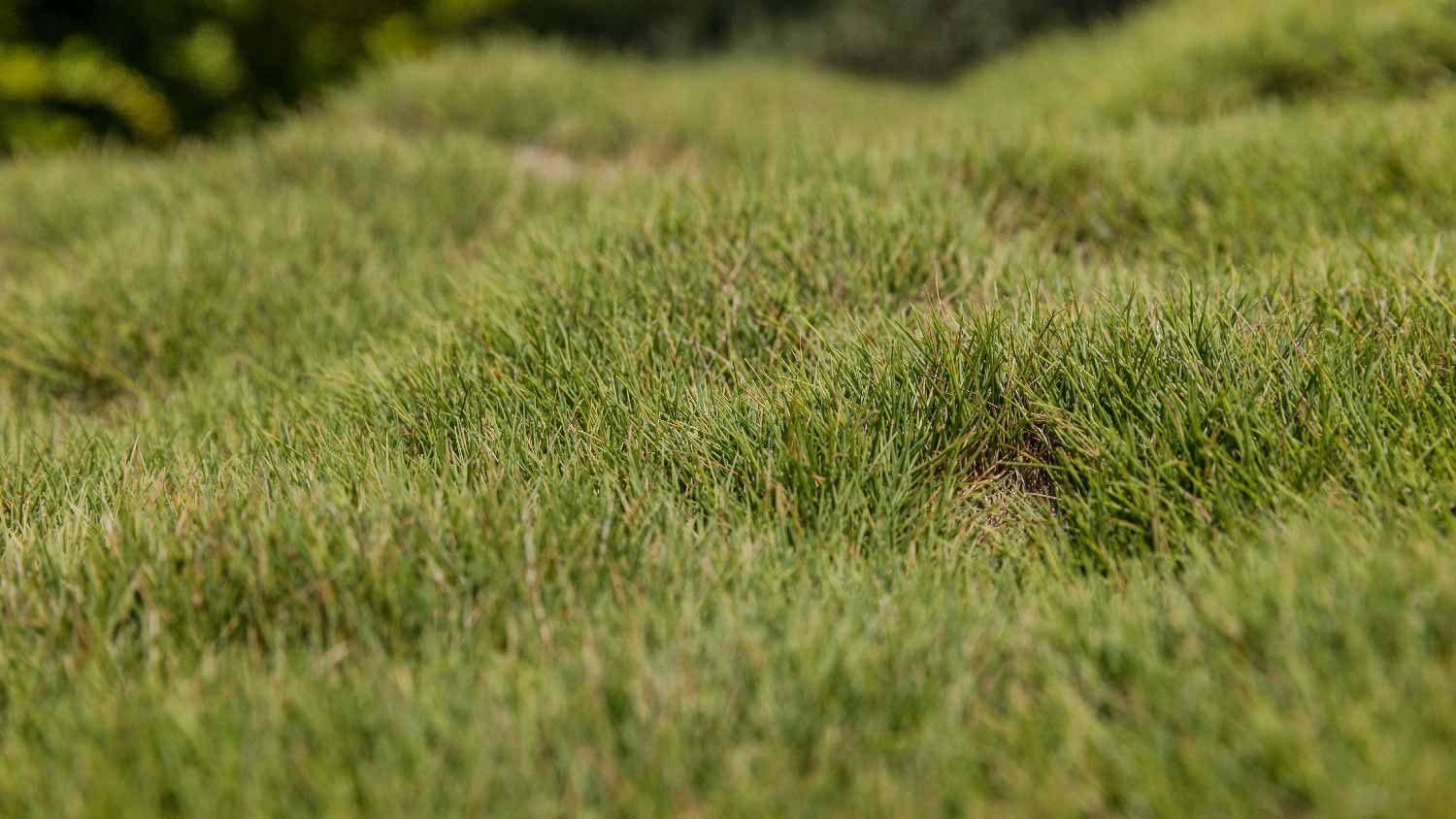
While it is slower to germinate than other varieties, Zoysia grass spreads through rhizomes and stolons and can quickly develop a thick, carpet-like layer, which holds up well to foot traffic. It can thrive in various soils, but is prone to large patch disease when soil temperatures are between 65 and 75 degrees Fahrenheit. One of the benefits of Zoysia grass vs Bermuda grass is that Zoysia grass handles shade better than any other warm-season grass —though it still prefers full sun and can get patchy in the shade.
Keep Zoysia grass healthy by mowing weekly and maintaining a length of about 1¼ inches tall. Give these lawns one1 inch of water per week.
| Pros | Cons |
|---|---|
| Grows quickly | Germinates slowly |
| More tolerant to shade than Bermuda grass | Susceptible to disease and pests |
| Does well in a variety of soils | High maintenance |
Best for: Southern areas with too much shade for Bermuda grass
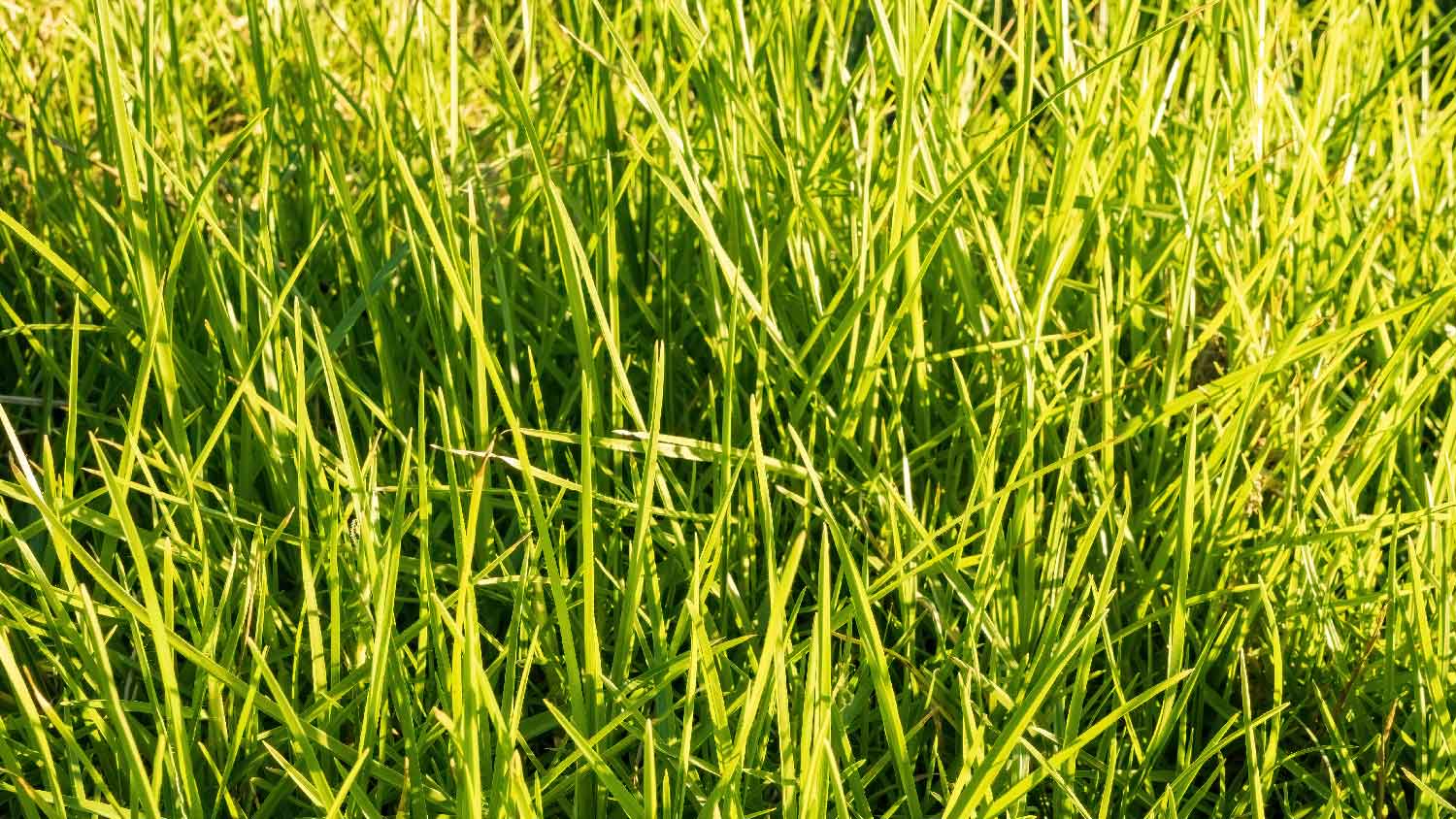
One of the heartiest grasses in the world, kikuyu grass can thrive in poor soils, even with little fertilizer. Kikuyu grass can thrive in temperatures upwards of 100 degrees, but unlike many other warm-season grasses, it maintains its green color throughout the winter. A major benefit kikuyu grass has over other species is that it produces fewer seedheads and less pollen, making it less bothersome to those with grass allergies. On the downside, it spreads aggressively and can quickly overtake flowerbeds and other areas.
Because kikuyu grass is prone to thatch growth and scalping, it should be kept short and mowed to ⅝ inch long, which will also keep its aggressive growth under control.
| Pros | Cons |
|---|---|
| Performs well in poor soils | Spreads quickly and aggressively and easily grows out of its designated boundaries |
| Minimal pollen, which reduces allergens | Cannot be used with other grasses due to its invasive nature |
| Stays green in winter better than other warm-season grasses | High thatch growth and prone to scalping |
Best for: Homeowners worried about seasonal allergies, yards with poor soil, or those in Southern regions who want to ensure their grass stays green in the winter
Excessive traffic hurts grass in many ways. First, pressure from pedestrians compacts the soil, making it more difficult for grasses to spread their roots. Additionally, feet and animal paws can bend, break, or tear individual grass blades, negatively impacting the appearance of the lawn and harming the plant itself.
Plant damage can also make grass more susceptible to pathogens, making it vulnerable to disease and pest infestations. Beyond that, when brown patches appear, soil erosion can occur and open lawns up to weed infestations and moss growth—further reducing the grasses’ health by diverting nutrients away from its roots.
Start by assessing the damaged area and your overall lawn’s condition. If you only have a few small bare patches, you may want to overseed the area with a compatible grass that can survive under high traffic. Keep in mind that some species, such as Bermuda grass and kikuyu grass, are too aggressive to be planted with other varieties. Depending on the grass type, you may be able to leave small damaged areas to self-repair. Alternatively, you may need to reseed or resod the whole area and start your lawn fresh with a more hearty grass species. Whatever you do, water the site regularly and direct traffic away from the damaged areas as they regrow.
You may want to hire a local lawn care company to help you evaluate your situation and determine the best course of action moving forward. A local lawn care expert can help you determine if you should reseed or replant the lawn and how to remove the grass efficiently.
From average costs to expert advice, get all the answers you need to get your job done.

Your total lawn care cost depends on several factors, including the type of service and lawn size. Our guide will cover what you can expect to pay for lawn care.

How much it costs to rent a lawn aerator depends on what kind you rent and how long you rent it for. Read on for the full details.
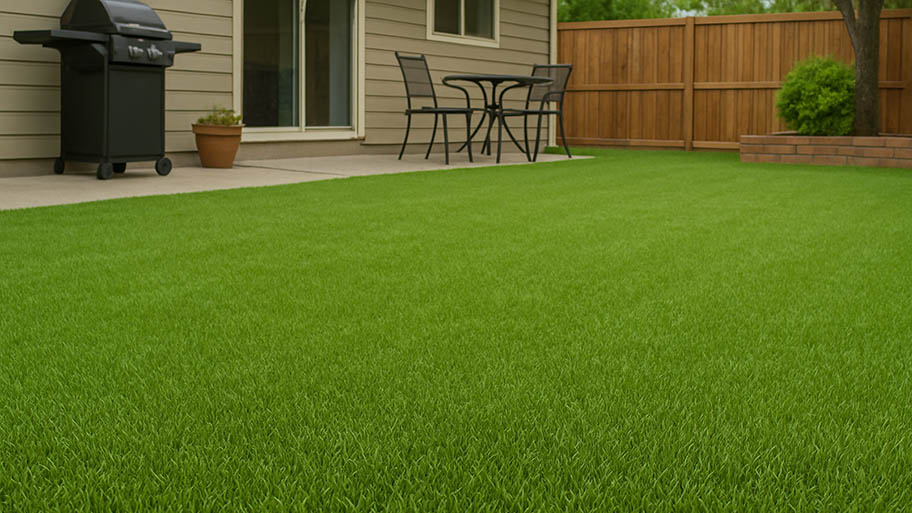
Artificial grass is a low-maintenance alternative to traditional turf. Learn how much artificial grass installation costs and what affects your price.
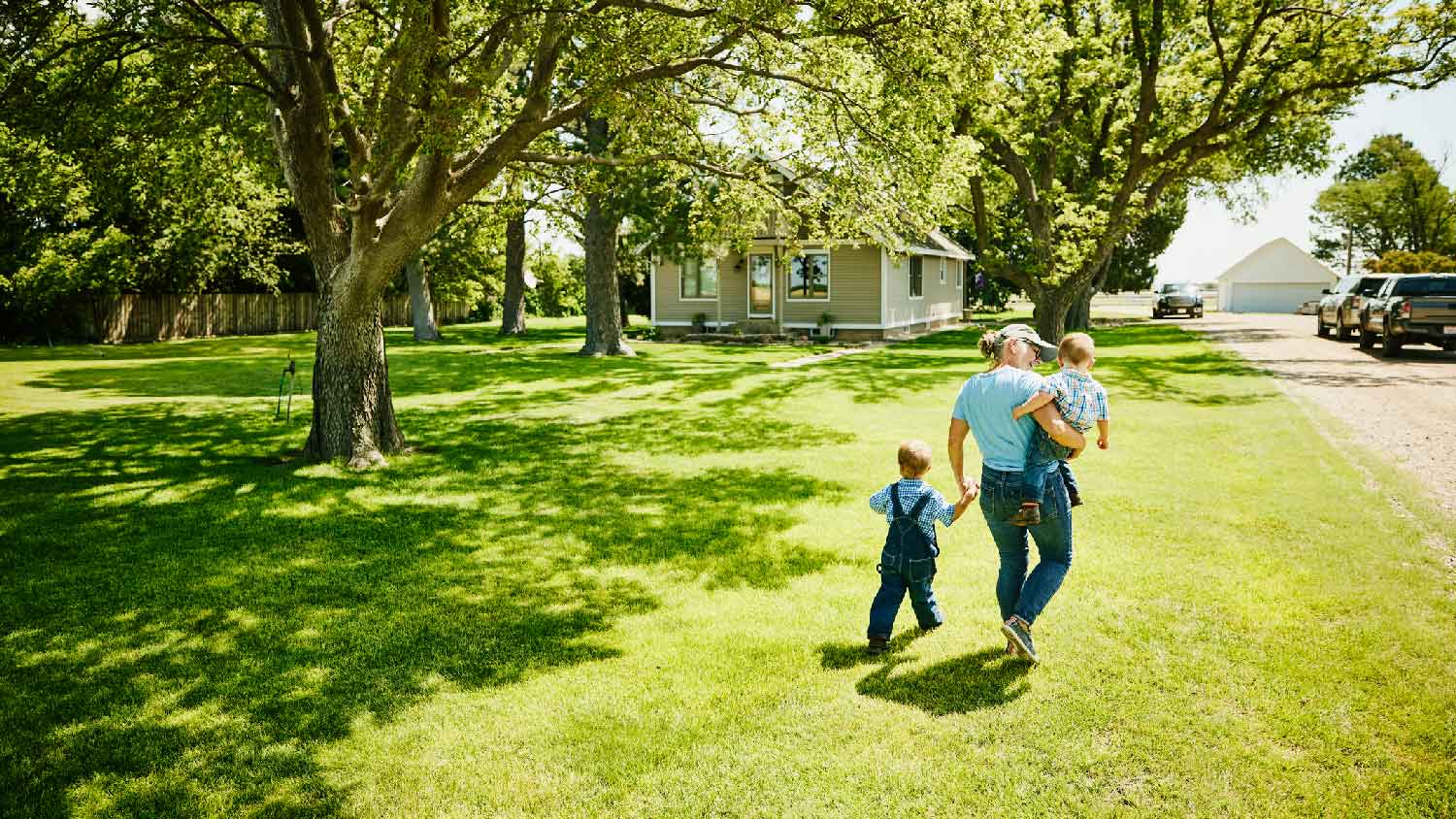
Why is my yard so soft and soggy? Use this helpful guide to diagnose the issue and implement a solution that will restore your yard’s health.
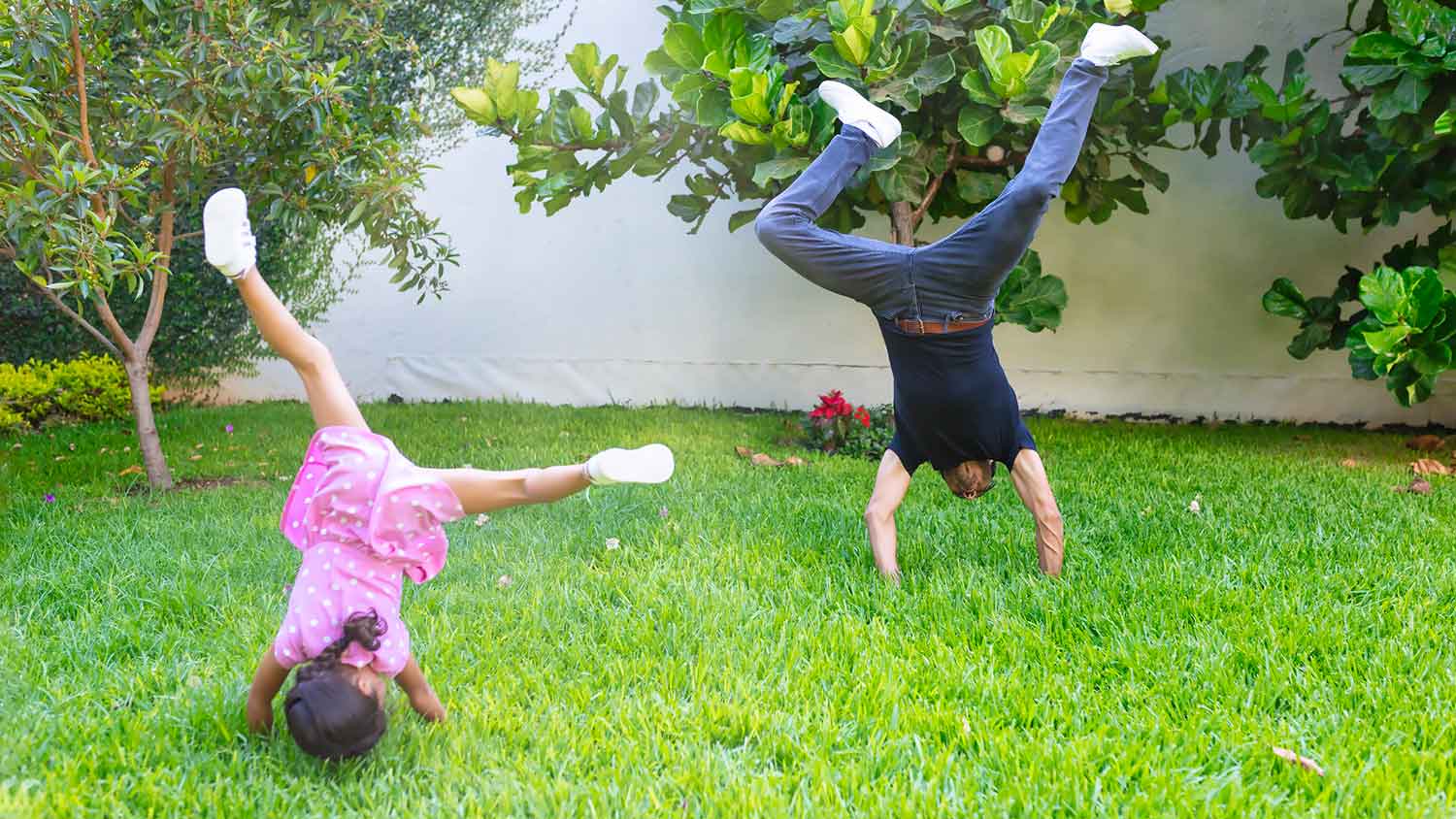
If you’re dreaming of growing a thick, healthy lawn, one of your key questions will be: How much grass seed do I need? Learn how to calculate it in this guide.

Resembling scrambled eggs, dog vomit slime mold is an unsightly—but nontoxic—nuisance. Learn how to get rid of dog vomit slime mold in a few easy steps.